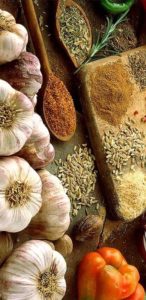From our list of herbs and spices, the following are recommended for Lactation:
Scroll down for links.
- Blessed Thistle
- Chasteberry
- Fennel Seed
- Fenugreek
- Milk Thistle
- Nettle
Natural Cures and Remedies for Lactation
Contraindications, Interactions, and Side Effects (Alkanet) – AHP Class 2a, 2b, 2c, 2d. Long-term use discouraged. Contains pyrrolizidine alkaloids (PAs). Effective July 1996, the AHP Board of Trustees recommends that all products with botanical ingredient(s) that contain toxic PAs, including Borago officinalis, display the following cautionary statement on the label: “For external use only. Do not apply to broken or abraded skin. Do not use when nursing” (AHP). PAs are genotoxic, carcinogenic, and hepatotoxic (CAN). Due to the PAs, alkanet use in pregnancy and lactation is to be avoided (JAD). Consolicine & Consolidine: CNS-Paralytic (3 × cynoglossine) (PHR). Dietary alkannin for 15 weeks at 1% of diet nontoxic in mice (LAF). Shikonin immuno-modulatory at low doses, immunosuppressant at high doses.

Contraindications, Interactions, and Side Effects (Prickly Ash) – Class 2b (AHP). None reported (PHR). Reported to be toxic to animals (CAN). Because of pharmacologically active alkaloids and coumarins, its use in pregnancy and lactation is to be avoided. May interfere with anticoagulant therapy. Excessive use should be avoided (CAN).
Blessed Thistle, Chasteberry, Fennel Seed, Fenugreek, Milk Thistle, Nettle
Because it is reputed to affect the menstrual cycle, its use in pregnancy and lactation is to be avoided (CAN). Excessive use should be avoided in view of the limited toxicity data (CAN).
Because of the anthraquinones, nonstandardized preparations should be avoided during pregnancy and lactation (CAN). “Anthraquinones may be secreted into breast milk.” Also contraindicated in arthrosis, hemorrhoids, and nephropathy (CAN), intestinal obstruction, abdominal pain of unknown causes, any enterosis (appendicitis, colitis, Crohns disease, and irritable bowel syndrome), hemorrhoids, nephropathy, menstruation (AHP), and urethrosis (CAN). Not for use in cases of diarrhea or abdominal pain. Discontinue use if diarrhea or watery stools occur. Consult a health care provider in cases of pregnancy or lactation. Not for long-term use, use more than 8-10 days, or overdosage (AHP, CAN). Rhubarb leaves, high in oxalic acid, should not be eaten (CAN). One case of anaphylaxis following ingestion reported (CAN). Contains 4-11% stilbene derivatives, which pose such risks that the herb “can no longer be recommended” (SHT). While widely used, anthranoid-containing laxatives can be habit-forming; some contain compounds suspected of being cytotoxic, genotoxic, mutagenic, and even tumorigenic. Epidemiological studies in Germany reveal that abusers of anthranoid laxatives have a three times higher rate of colon carcinoma (AEH).
Chronic comfrey use implicated in at least one instance of hepatic VOD (PNC). Effective July 1996, the AHP Board of Trustees recommends that all products with botanical ingredient(s) that contain toxic PAs, including Borago officinalis, display the following cautionary statement on the label, “For external use only. Do not apply to broken or abraded skin. Do not use when nursing” (AHP). CAN cautions the PAs are genotoxic, carcinogenic, and hepatotoxic. Because of the PAs, its use in pregnancy and lactation is to be avoided. Animal studies document placental transfer and secretion into breast milk of unsaturated PAs (CAN). May speed up metabolism of other drugs (stimulates metabolism of aminopyrine- N-demethylase, a drug metabolizing enzyme) (CAN). Internal use for more than 4-6 weeks is discouraged (SHT).
Blessed Thistle
Chasteberry
Fennel Seed
Fenugreek
Milk Thistle
Nettle
Hazards and/or side effects not known for proper therapeutic dosages (PH2). CAN cautions that high doses can cause irritation, numbness, salivation, and tremors. Because of irritant and uterine activity, in vitro and in vivo, its use in pregnancy and lactation is to be avoided. Said to be toxic parenterally but nontoxic orally (to 90,000 mg/kg in rats and rabbits). May potentiate pharmaceutical sedatives (CAN).
